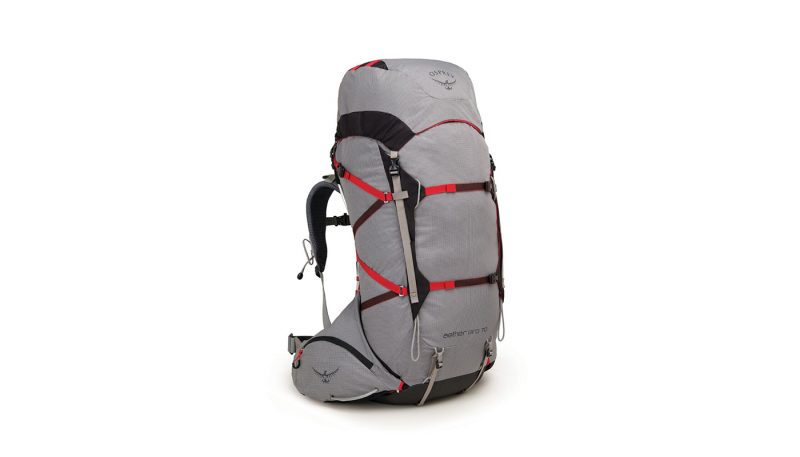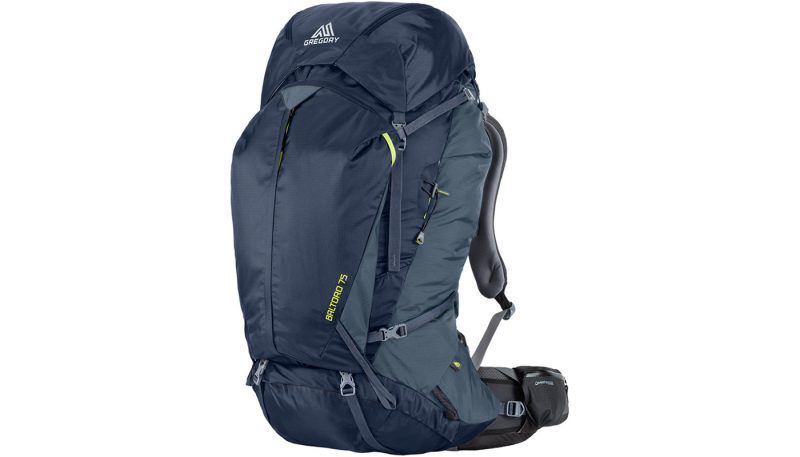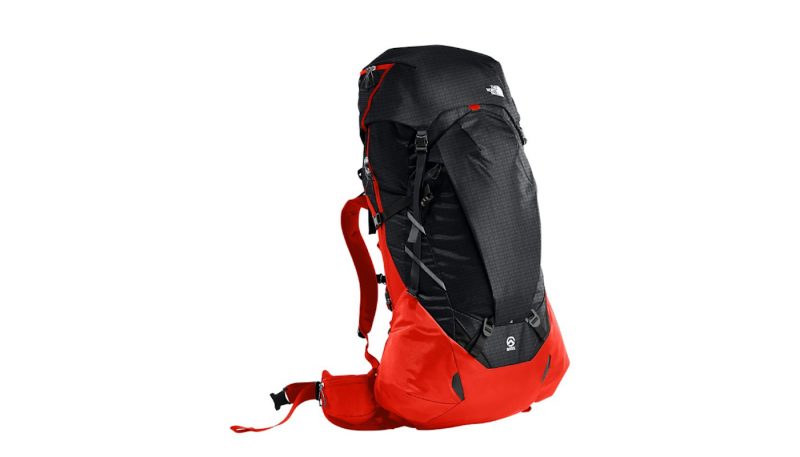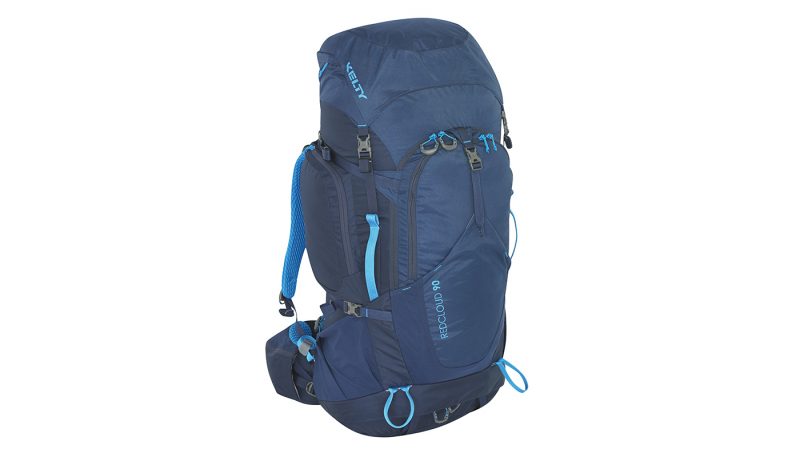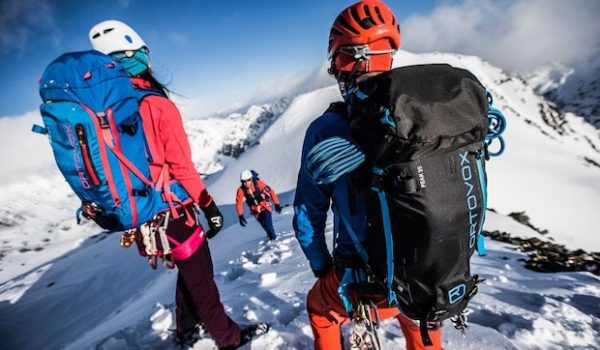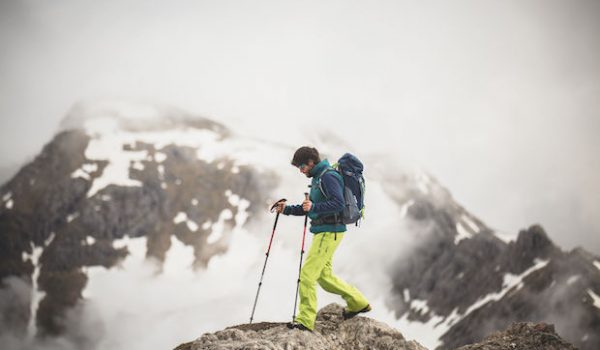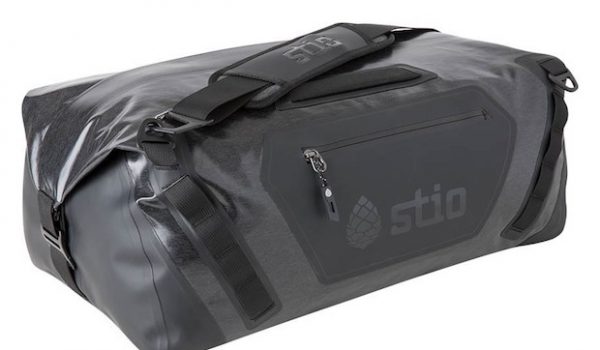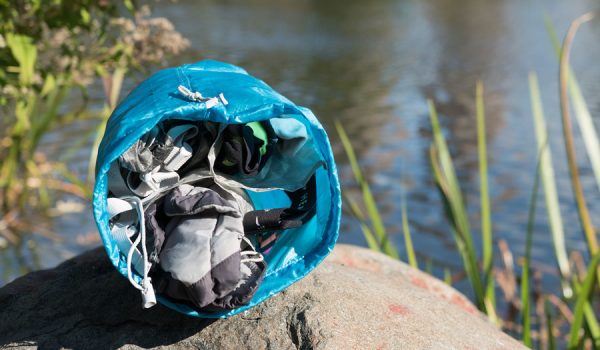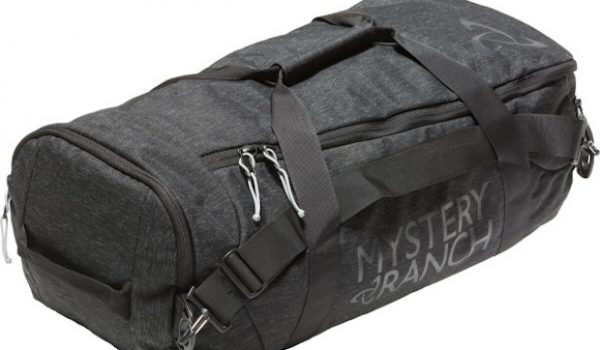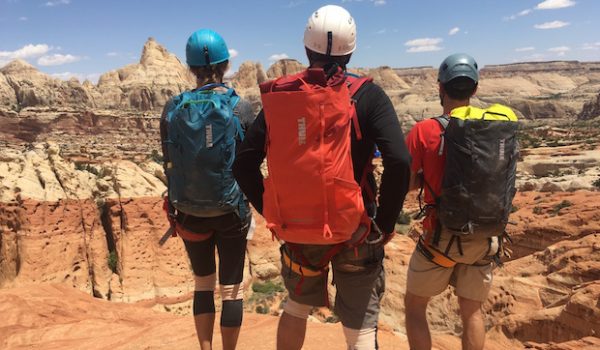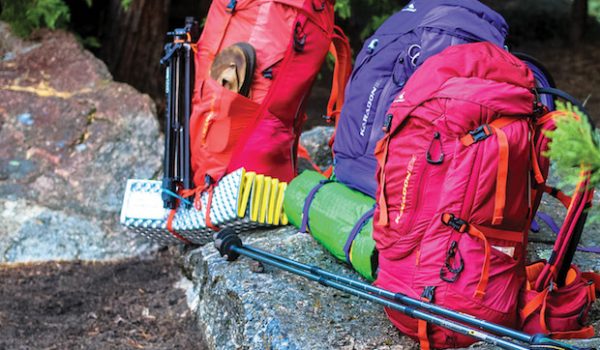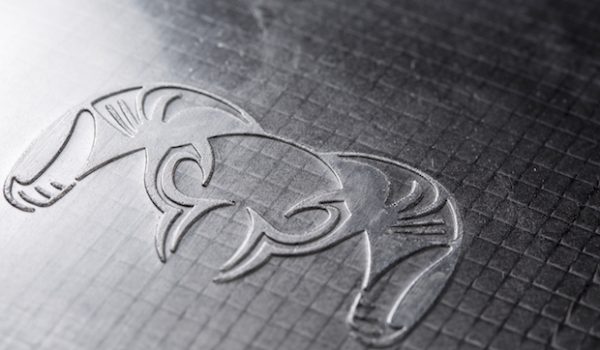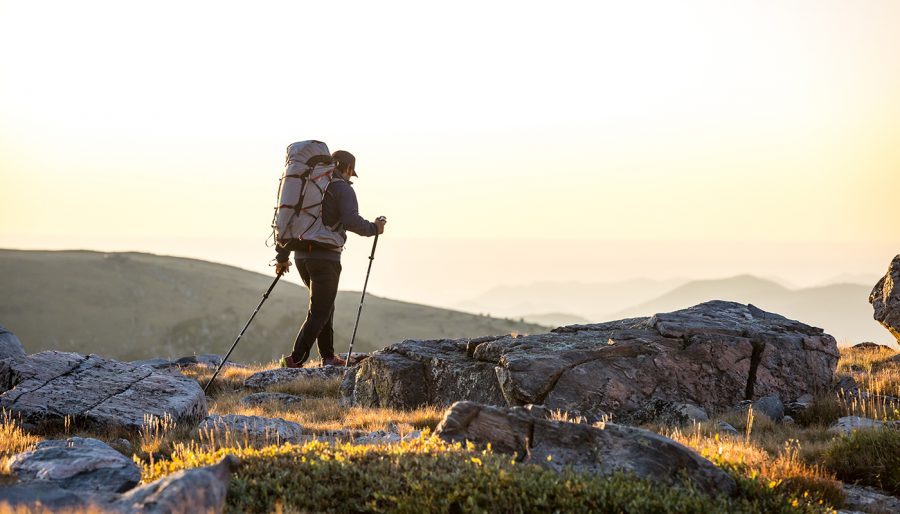
This test straddles two overlapping groups of backpacks – so-called ‘expedition packs’, that are well suited to packing in a mountaineering high camp or hauling supplies, and ‘trail packs’, that are perfect for long thru-hikes, sections of the Appalachian trail, week-long trips, or long weekends. Anything shorter than a long weekend and you can probably get away using a smaller pack that will be, naturally, lighter. There is one pack that lies closer to the ‘expedition’ end of the spectrum (the Prophet 100), one that’s towards the ‘trail’ end (The Baltoro 75), and two that are somewhere in between (the Aether Pro 70 and the Redcloud 90).
Dozens of packs were researched and four are being profiled here. In this category, we weren’t looking for ultralight packs that aren’t durable enough to be taken off trail or up into the mountains, and we also weren’t looking for packs that were so specialized to a mountain setting that they wouldn’t be able to perform in traditional backpacking. We wanted to look at packs that straddle these two environments, that are able to hold their own in each.
One big lesson from this test is that there are fewer and fewer reasons to carry a hundred liters of anything around in the backcountry. This category is getting narrower and is best suited for someone who has needs in guiding, mountaineering, or thru-hiking when it’s far between resupplies, whether by choice or necessity. The larger packs are moving even further towards the mountaineering end of the spectrum, as backpacking and thru-hiking gear get much lighter and more compact. While these may be the trends, I’m nostalgic for the days when we had packs that were both huge and light, such as the now-decommissioned Arc’teryx Altra.
Comparing this year with previous years, these packs seem to be getting more solid, while staying about the same weight.

Comfort
The most comfortable pack in our test set this year was the Osprey Aether Pro 70, which was buoyed by its weight—the lightest in the test. This caused our tester to exclaim “Osprey has finally built a light pack!” The Gregory is also comfortable, with perhaps a better experience, but it’s noticeably heavier than the Osprey. The least comfortable was the Kelty Redcloud 90, thanks to its blocks of back padding, that didn’t jive well with some backs. Also, the mesh that covers these blocks is too coarse to use without a shirt on, at least for those with more sensitive skin. It also doesn’t allow much air to flow to the back.
One interesting trend that these packs show is continued use of very flat back padding. This design came from mountaineering packs because they were simple to make and also prevented the hard corner of a fuel can from poking you in the kidney and driving you crazy. These flat-backs are now found in many trail packs, such as the Baltoro, which incorporates an air flow system to improve the breathability of the padding.
The factor that proved most important in this rating category was a pack’s loaded weight, and its harness’ ability to distribute that weight effectively over the back, shoulders, and hips. We also looked at ancillary padding placement, shape, and consistency. The mean weight of these four packs was 5.2 pounds (2.4 kg), with a pretty tight range, other than the very-light Osprey.
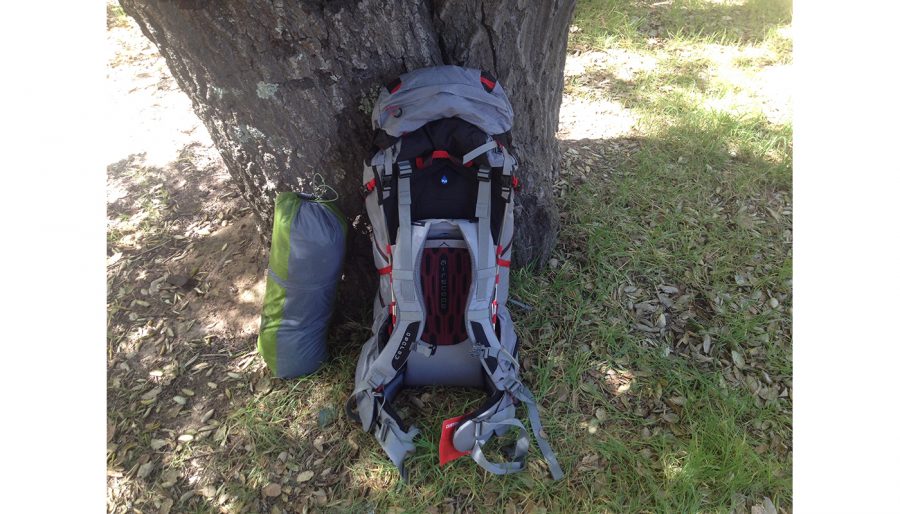
Storage
The best performing pack in this rating category is the Osprey. It features a threaded (simply through the rounded aluminum stays of the frame) Z-cinch, which quickly and easily locks down whatever is loaded in the pack, so things don’t shift around and annoy the hiker. It is also the only pack in the test set that can realistically accommodate a pair of skis. The worst performing in this rating category was the Redcloud, mostly due to its narrow body compartment, and commensurate high center of gravity when fully loaded.
The storage factors that were highlighted in testing were a pack’s accessibility (preferably at different points along the length of the compartment) and its compressibility.
Stability
If a backpack is able to pivot while fully loaded, keeping your center of gravity upright, it’s going to go a long way for comfort and quality of life on a backpacking trip. It’s not only to avoid being made fun of for toppling over when stepping over a log, but good stability prevents seemingly random falls when the pack decides to lurch. Stability is also influenced by factors such as how much a pack can compress a load, maintain a packed center of gravity, and balance. A well-packed pack with a good center of gravity will stand up straight when setting on the ground.
The factors proving most consequential in testing were the body shape dimensions and ratios of the height to the width. We then load the packs fully, with about the same amount of gear per liter of volume and see how these body shape dimensions lead to balance, stability, and center of gravity.
The North Face Prophet 100 takes the top spot for stability. The waist belt has a bit of pivot, although we would prefer more, given how overloaded this pack may get. It expands upwards a lot, so if it’s overpacked it can get top heavy and unwieldy, so just keep balance and stability in mind when you’re loading it. Other than those potential pitfalls, it is a good, square body shape that lends itself well to balance. It also has a square bottom that serves as an effective seat, if it is packed right.
The Kelty took the bottom spot in this rating category, first because of its lack of pivot – the two wings of the waist belt are rigidly attached to the main body and frame, giving it no flex when leaning to the left or right. It’s also a tall, narrow main compartment, that lends itself to imprecise packing and a high center of gravity.
One interesting trend in this rating category is the U-frame of the Osprey. All of the other packs in this category have either vertical aluminum stays or a box-design of rounded aluminum stays. The Osprey combined the two, with a U-shaped design, which gives the light weight and flexibility of the former style, while still preserving most of the stability and performance of the latter.
Durability
Durability is an important factor in choosing a backpack. It provides a general confidence that your gear is going to be able to take whatever you throw at it, without having to worry in the moment, or without having to say ‘no’ to a side trip up a slot canyon because you think your pack may get rubbed raw and not make it out with all your stuff still inside.
The North Face Prophet takes this rating category, though, as is commonly the case, it does come at a cost of weight. It’s a tank, with a few features packed in that highlight trends that are affecting all packs. First, the pack utilizes Dyneema, which, as the promotional tag will inform you, is “15 times stronger than steel, floats on water, and is soft as silk,” and was originally developed in the climbing world for light draws and runners. There is also an exterior treatment of the pack’s top pocket and body, that can take a beating and still be relatively water resistant.
The Kelty is the least durable. Perhaps most consequentially, the seam where the shoulder strap connects to the body of the pack is thin, and with enough time and force it will fail, and the shoulder padding will tear off. The water bottle sleeve mesh is underweight and will start to disintegrate with friction, and the drawstring closing the main body compartment is basic and doesn’t inspire much confidence. The back sleeve is also ringed by some mesh that will snag on anything sharp.
The things that we looked at most closely in testing were exterior materials and treatment, buckles and zippers, and a pack’s overall weatherproofness.
Extras
This rating category covers everything that the other categories miss, from the price, to the goodies that the manufacturers pack on to make them useful. In this test we looked at a packs value (performance versus cost), and basic gear extras (water bottle sleeves, trekking pole ties, gear loops, hydration system integration, etc.), and any special gear extras, such as accommodation for skis or a snowboard, or back sleeves that are big and beefy enough to hold a pair of crampons.
It’s no surprise that the top score in this rating category went to the Osprey Aether Pro 70, because it’s the pack that has the widest application, and it’s the only pack that makes it pretty easy to throw a pair of skis on the back. And best of all, the Osprey packs in these extras while also maintaining its weight advantage against the other packs. The bottom scorer was the Gregory, which serves well, but was just outshone by the other packs. This score highlights how features once exclusive to expedition packs are cross pollinating into lightweight trail packs. The North Face suffered from an atmospheric price tag, but was helped in this rating category by its awesome crampon sleeve. Another trick from the world of mountaineering is putting at least one gear loop on the waist belt, for some ice screws, or crevasse rescue kit, or some other protection that you might want to have handy even when you don’t have your harness on.
Test Methods
To test these backpacks, the process starts with research into the market, the trends that are driving change, and the new features that are generating buzz. After we narrow our list down with basic parameters of size, weight, and cost, we call in the products we are interested in testing, that we think will do the best in this category as we define it. The packs then get loaded up for multi-day backcountry testing.
We operate under a ‘steer into the strength’ principal: every piece of gear has its best application, so we try to set everything up for success and learn about the items strengths and weaknesses by trying to find the best job, or application, of each item. We wouldn’t be doing anyone a favor if we took the burliest, warmest boots we could find, and stuck them in a test of running shoes, and graded them based on the rating category where we expect running shoes to perform–the boots would end up with a very low score, our tester’s feet would be very sore, and no one would have learned anything. These methods are used year-to-year, tester-to-tester, so the process doesn’t become too esoteric or individualized to any one tester’s process, interests, specifications, or biases.
What is an Expedition Backpacking Pack?
Expedition backpacks are for big trips. Traditionally, expedition packs are thought of as packs well suited to packing in a mountaineering high camp or hauling supplies. With the development of lighter and stronger materials, these mountaineering packs have started to merge with long haul “trail packs”—what one might use for long thru-hikes, sections of the Appalachian trail, week-long trips, or long weekends. Trips shorter than a long weekend are probably better suited with a smaller pack that will be, naturally, lighter. There is one pack that lies closer to the ‘expedition’ end of the spectrum (TNF Prophet 100), one that’s towards the ‘trail’ end (Gregory Baltoro 75), and two that are somewhere in between (Osprey Aether Pro 70 and Kelty Redcloud 90).
These four packs average a retail price of $239, although the spread on that is wide, particular between the Kelty, which comes in at $220, and the other three, which range from $320 and $399.
A few definitions: The waist belt and the shoulder straps as a system are referred to as the harness. The load lifter is the strap that goes from the shoulder towards your ear, and controls the front to back pitch of the pack. The torso length measures the distance from where the should straps connect to the pack and the center of the waist belt. The top pocket, or lid, is the little unit that rides on top and holds your map and Snickers bar. The frame is the metal construction, which you usually can’t see, which gives structure to the pack. And, last but not least, the front of the pack is the side that touches your back, facing the direction of travel. The back is the side that faces away from you when you walk, and looks out all the beautiful country you’re putting in your rearview mirror.

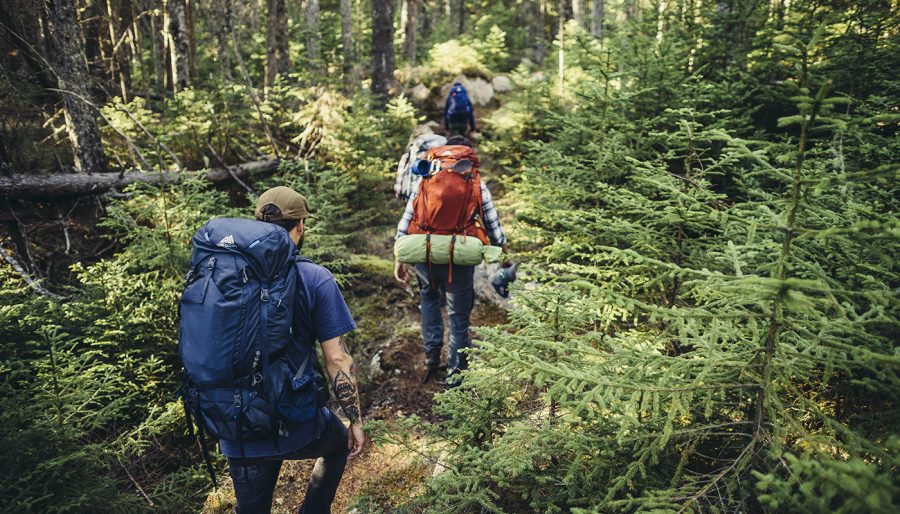











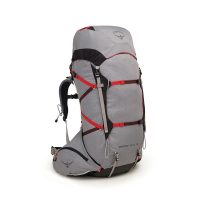
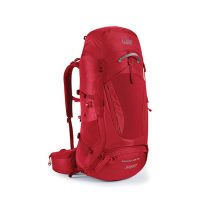
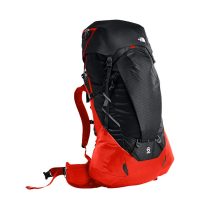

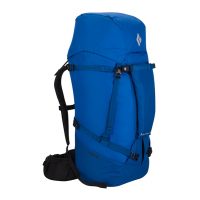
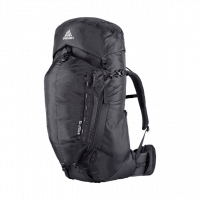
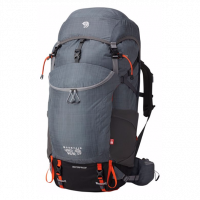

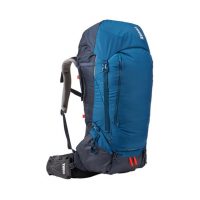


 92
92 